This post may contain affiliate links. If you make a purchase through a link, I may receive a small commission, at no cost to you. These commissions help keep this website up and running, and I thank you for your support. Read my full disclosure here.
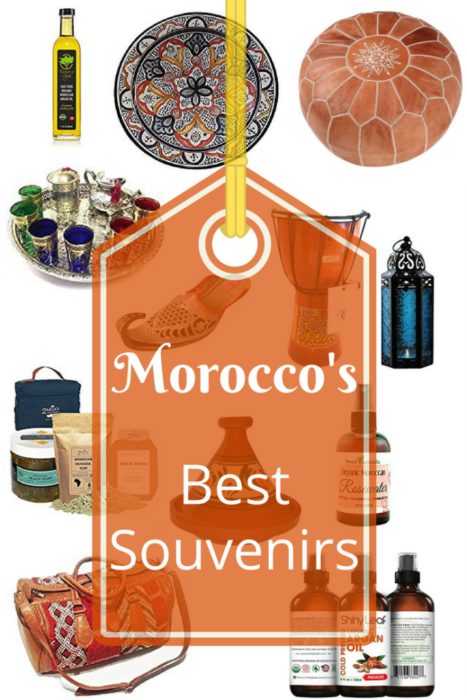
If you run out of room in your luggage, and don’t want to have to pay for extra luggage allowance, or simply just get too busy enjoying the sites of Morocco to find time for souvenir shopping, then don’t stress. The best thing about these souvenirs is that you can order them online and have them delivered and waiting for you when you arrive home.
Tips for Haggling in Morocco
I know that many of you might be uncomfortable with the idea of haggling, but you need to get used to it because that’s how things are sold in Morocco. Don’t start to feel guilty like you are ripping them off, they will never sell you something without ensuring that they are making a profit out of it.
Start by deciding on a price that you think is reasonable before you go to the markets. Because once there, you will feel under pressure to come up with a price quickly and you will likely end up paying too much. Once you see the item you want, work on getting them to reduce the price until it matches your ‘reasonable’ price. There is really no guide price in which to start, because sometimes they quote wildly overpriced amounts. If you don’t get the price you want to pay, then be prepared to walk away. Unless your price is completely unreasonable then most of the time they will call you back and begin dropping their prices.
- Merchants will often offer you some mint tea to sip on whilst you shop. If you accept it, then you are kinda obliged to buy something.
- If you are buying multiples, then drive an even harder bargain.
- If you are staying in a riad, then ask them what they would pay for the item that you are wanting to pay. They should be able to give you some idea of what a reasonable price is.
- Shopping will be more expensive in Marrakech, so if you are planning on travelling into other parts of Morocco, then you might want to consider waiting until you’ve see the prices there.
1. Moroccan Tagine
A Moroccan tagine is the most quintessential Moroccan souvenir. Not only do they make a delicious meal, but they also look great on display in your kitchen. If you are in Marrakech, try taking a Moroccan cooking class so that you can impress your friends and family with a delicious authentic Moroccan style tagine feast. The tagine can be used on the stove top (if using gas, use a protective metal heat diffuser to protect your tagine from cracking) or inside the oven.
What I love most about tagines is that it makes very little mess as it all cooks in the one pot, perfect for people like me who hate washing up.
2. Tagine and Cous Cous Cookbook
Now that you have your tagine, get yourself a Moroccan cookbook filled with delicious and inspiring recipes that you can whip up using your new tagine. Try Ghillie Basans very popular Tagines and Couscous – Delicious recipes for Moroccan One Pot Cooking. In this collection of deliciously authentic recipes you will find some of the best-loved classics of Moroccan cooking, such as the sumptuous lamb tagine with dates, almonds, and pistachios, and the tangy chicken tagine with preserved lemon, green olives, and thyme. It also includes recipes for variations on couscous, the classic accompaniment to tagines.
3. African Drum
Musical instruments make a great souvenir gift for kids and music loving adults. The most popular traditional African musical instrument is the djembe drum. Played with with bare hands slapping the goat skin drum head, it produces a rich, vibrant, resonating sound. Handcarved from a single piece of local hardwood and enhanced with a traditional painted design, this drum will also look great on display in any home.
4. Leather Pouffe
A leather pouffe looks great with any interior styling. This beautiful handmade tan brown Moroccan leather pouffe features a beautiful embroidered design. Produced by skilled craftsmen in a family artisan leather workshop in Marrakech, this pouffe is made using high quality leather.
5. Leather Slippers
Made of sheepskin, babouche are traditional Moroccan slippers made by hand. Morocco has long history of tanning and continue to use the traditional methods of vegetable tanning. Made of soft, smooth leather, the slippers feature beautiful embroidery.
6. Leather Bags
You will find a huge array of leather bags to choose from in Morocco. What I love about this souvenir is that you’ll get years of use out of it. This gorgeous leather and textile artisan Moroccan leather duffel bag will be your go to bag for everyday expeditions, overnight excursions and carry-on. The textile is hand knotted kilim wool rug in the classic red color palette of the Zemmour tribe of the Middle Atlas region. It is one of the oldest, most respected and recognizable weaving traditions in Morocco and features black and white geometric motifs and symbols. The versatile design includes both carrying handles and a hands-free shoulder strap.
7. Mint Tea Set
The Moroccan people are excellent hosts, and as soon as you arrive at your accommodation you will be immediately served some very sweet mint tea. Mint tea is always on the menu at cafe’s and restaurants and also sold on the streets. It’s one of the most popular drinks in Morocco and you will definitely miss it when you return home. So purchase your own mint tea set and recreate Moroccan mint tea in your own home. This gorgeous set includes a silver plated tray with traditional Moroccan engraving, a silver teapot, a glass canister and six coloured glasses.
Moroccan Mint Tea Recipe
Ingredients
- 1 tablespoon of Chinese gunpowder green tea
- 5 cups of boiling water
- 4 + tablespoons of sugar (Moroccan’s love it sweet and usually add much more than this, but add it to your taste preference)
- 1 large bunch of fresh mint – the Moroccan’s use na na mint, a type of sweet spearmint, but if you can’t get it then use this Moroccan mint tea
Preparation
Place the tea into your Moroccan tea pot, then add 1 cup of the hot water to it and swirl the water around in order to rinse the tea. Then drain this water out and discard it, but make sure you keep the tea in the pot. Add the remaining 4 cups of hot water and let it steep for 2 minutes. Then add the sugar, stir to dissolve and then the mint leaves. Add a sprig of the mint into each of the cups before serving the tea into them.
8. Ceramics
You will see brightly coloured and patterned handmade ceramics everywhere you go in Morocco. My favourite are the fabulous Moroccan plates because they are so functional and come in all range of sizes so if you are travelling light, you can still manage to squeeze a small one into your bag. They can either be used or hung as a decorative wall hanging. Decorative tiles are also gorgeous as a coaster or feature tile in your home. The hard part will be choosing which one to buy.
9. Fabrics

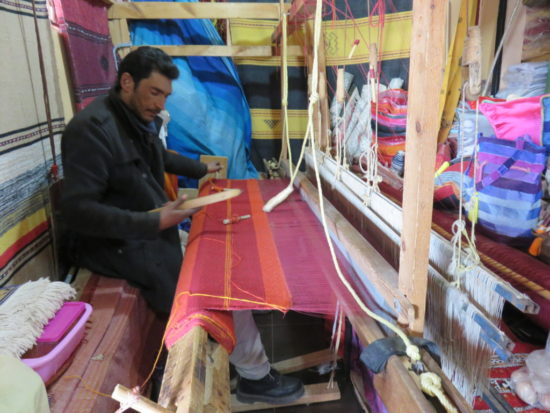
This is your chance to purchase gorgeous, quality Moroccan fabrics for an excellent price. Ask at your accommodation where the nearest quality store is because there is a lot of rubbish out there. We were lucky to visit one in Ouarzazate where they had an amazing array of vibrant fabrics on offer as well as embroidered fabrics.
10. Fossils
I didn’t know about Moroccan fossils until I travelled there and saw how much tourism it created for Morocco. When you see the amazing fossils you will understand why people travel from far and wide to fossil hunt and shop in Morocco. During our holiday in Morocco we visited a fossil workshop and discovered the amazing variety of fossils. They turn them into everything from bathroom vanities to chess sets. They range in price, so there are lots of affordable pieces, however, some of them are very rare, so can fetch high prices.
11. Lanterns
In the souks you will find lots of lanterns that come in all shapes and sizes and colours. They can be a bit awkward to get home, but they do look fabulous hanging inside or out. The cheaper one are lighter and are made using aluminium, however, these are much more fragile. The more expensive heavy duty ones will last longer, but are quite difficult to transport home, so consider getting them shipped instead.
12. Medjool Dates
Over the last few years I’ve really developed a love of dates. Growing up in New Zealand, we only ever had access to the very dried and shrivelled inferior dates. However, whilst living in Europe (where you can get really good dates) I fell in love with the medjool date. This gorgeous plump date is deliciously sweet and and considered the most valuable of all the date varieties. High in dietary fibre, magnesium, potassium and vitamin B-6, dates are a healthy and nutritious treat. I love including them in my cooking including salads and tagine (I make a mean lamb tagine where the slow cooked dates dissolve to make a rich sauce), also with my overnight oats, and, for a sweet treat, date and cocoa truffles. I usually pay nearly £3 for a tiny tray of medjool dates from the supermarket, but we got a 1kg large box for only €8.
13. Argan Oil
The argan tree is only found in this part of the world. You’ll frequently see the trees quite literally filled with goats, who love to feast on them. The argan trees produce nuts. The flesh of the fruit is removed and inside is a hard nut, which is cracked open to expose the kernel. You can purchase two types of argan oil, one for cooking (yum!) and the other for cosmetics. The cosmetic argan oil is made from the raw oil, but the argan cooking oil is made from roasted nuts.
Cosmetic argan oil is deeply moisturising and good for your skin and hair. If you are keen to buy some argan oil, then visit one of the Fair-trade cooperatives. We visited one on our journey over the Atlas Mountains during our holiday in Morocco. These businesses enable local women to earn an income and provides them financial independence, which is difficult for women in this part of the world. Prices are usually fixed, but fair. They usually offer both argan oil and a range of products such as body and face creams that have been made using argan oil. They also sell argan honey and argan nut butter which are really delicious.
You should only purchase cosmetic argan oil from reputable businesses as they often sell the cheaper cooking oil version as cosmetic oil or, mix it with other cheaper, rancid oils. Don’t be fooled by the shops that have someone pretending to grind the nuts out the front, as these are usually just faked for tourists. The oil should be sold in glass bottles which helps to increase its shelf life. It should have a light, nutty smell and a golden yellow colour. Cooking oil is a deeper golden brown colour.
14. Rose Water

visit the M’Goun Valley, otherwise known as Roses Valley. It’s famous for its scented roses which bloom from April to mid-May. How these roses first got here is a bit of a mystery, but they grow wild all over this area. The variety is the Rosa Damascena, the Damask rose, which originates from ancient Syria and has an intense perfume. The local women gather the petals by hand and they are made into rose water, soaps and pot-pourri, but most is exported to France to be used in perfumes. Unfortunately, we weren’t there for the rose season, but there were lots of local shops dotted along the road selling their rose products.
Rose water is slightly astringent, making it a good toner for dry skin. It also opens blocked pores and keeps blackheads, pimples and acne at bay. It can also be used on your hair as a natural moisturiser.
15. Black Eucalyptus Soap and Ghassoul Clay
A hammam treatment is an essential Moroccan experience. Expect to be vigorously scrubbed down with an exfoliating mitt using [black eucalyptus soap. It cleanses and removes dead skin cells while hydrating and firming skin as it’s rich in vitamin E. Ghassoul (pronounced rassoul) is a mineral found beneath the Moroccan Atlas Mountains. It’s jam-packed with magnesium, calcium, and potassium. When mixed with water and applied to the skin, ghassoul clay absorbs excess grease and eliminates impurities. It can also be used in your hair to add shine and increase volume.
You can create your own hamman experience at home, use this bath and shower set that includes black soap, ghassoul clay and an exfoliating mitt.











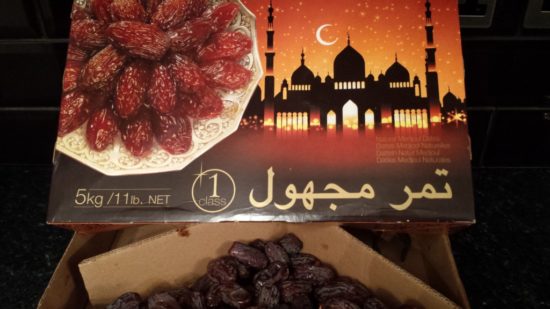



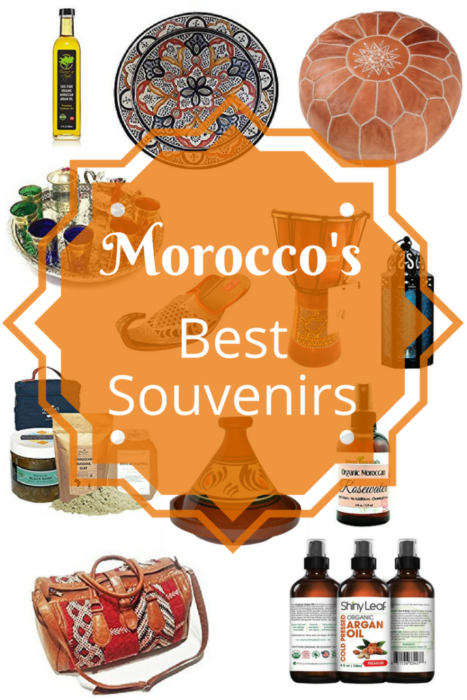
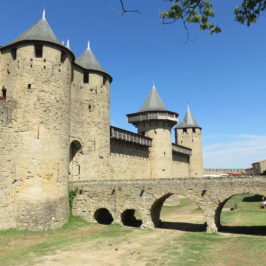
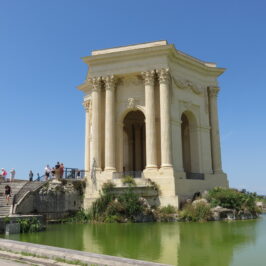

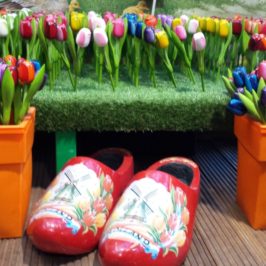
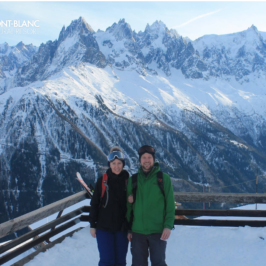

Hester Appoyer
Great advice! Thank you!